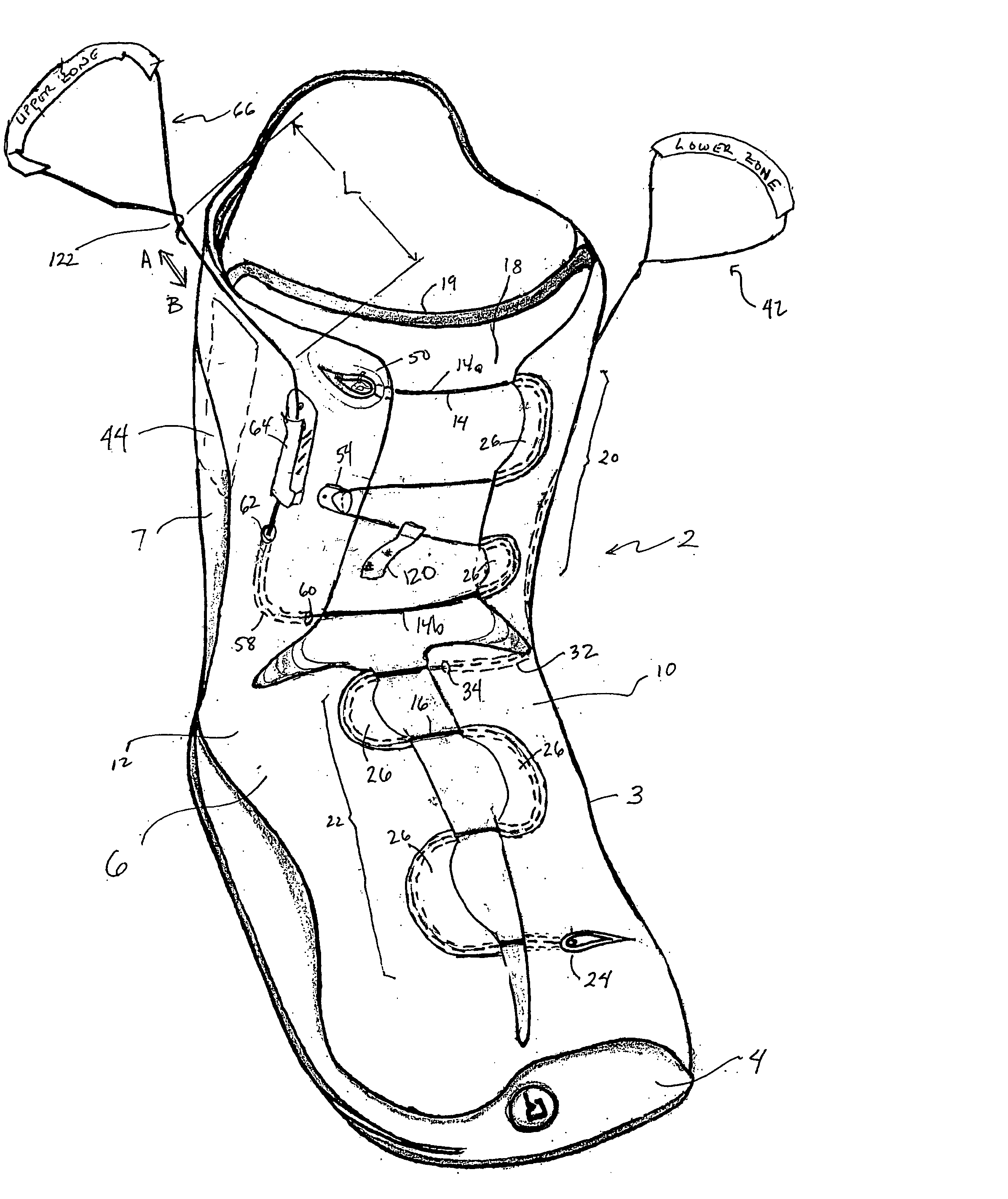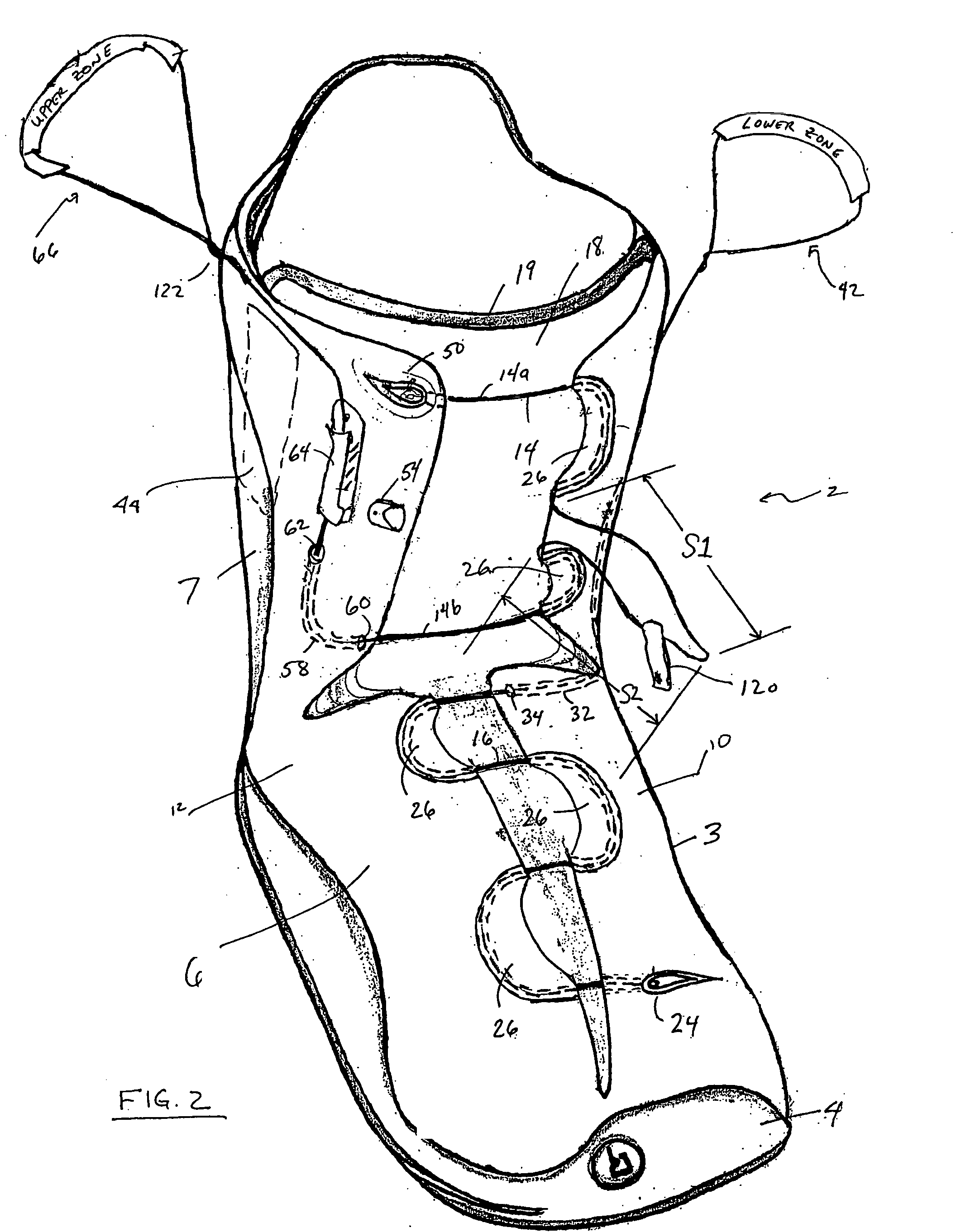Lace system for footwear
a lacing system and shoelace technology, applied in the field of tightening arrangements, can solve the problems of difficult to tighten the lace merely by pulling on the free end, wearer may still experience undesirable tightness and discomfort in parts of the boot, and the lacing system lacks a convenient arrangement for tightening the laces, etc., to achieve convenient removal of the boot, and easy removal of the boot from the wearer
- Summary
- Abstract
- Description
- Claims
- Application Information
AI Technical Summary
Benefits of technology
Problems solved by technology
Method used
Image
Examples
Embodiment Construction
[0023] The boot of the present invention includes arrangement(s) and / or technique(s) for making the process of tightening and loosening the laces of a boot more convenient for the wearer.
[0024] In one aspect, the boot is provided with at least two independent lacing zones, the tensions of which are separately adjustable by the wearer, thereby increasing comfort, flexibility and / or performance for the wearer. Thus, the wearer can choose (for example) for part of the boot to fit more tightly, and for another part of the boot to fit less tightly.
[0025] To provide the wearer of the boot of the present invention with the familiar sensation that accompanies tightening conventionally laced boots, in one embodiment, the zones may be tightened by pulling on two lace ends, each of which emerges from a lacing zone at about the same location typical of a conventionally laced boot, i.e., at the upper and / or forward region of the boot. In one embodiment, each zone is tightened with a separate l...
PUM
 Login to View More
Login to View More Abstract
Description
Claims
Application Information
 Login to View More
Login to View More - R&D
- Intellectual Property
- Life Sciences
- Materials
- Tech Scout
- Unparalleled Data Quality
- Higher Quality Content
- 60% Fewer Hallucinations
Browse by: Latest US Patents, China's latest patents, Technical Efficacy Thesaurus, Application Domain, Technology Topic, Popular Technical Reports.
© 2025 PatSnap. All rights reserved.Legal|Privacy policy|Modern Slavery Act Transparency Statement|Sitemap|About US| Contact US: help@patsnap.com



